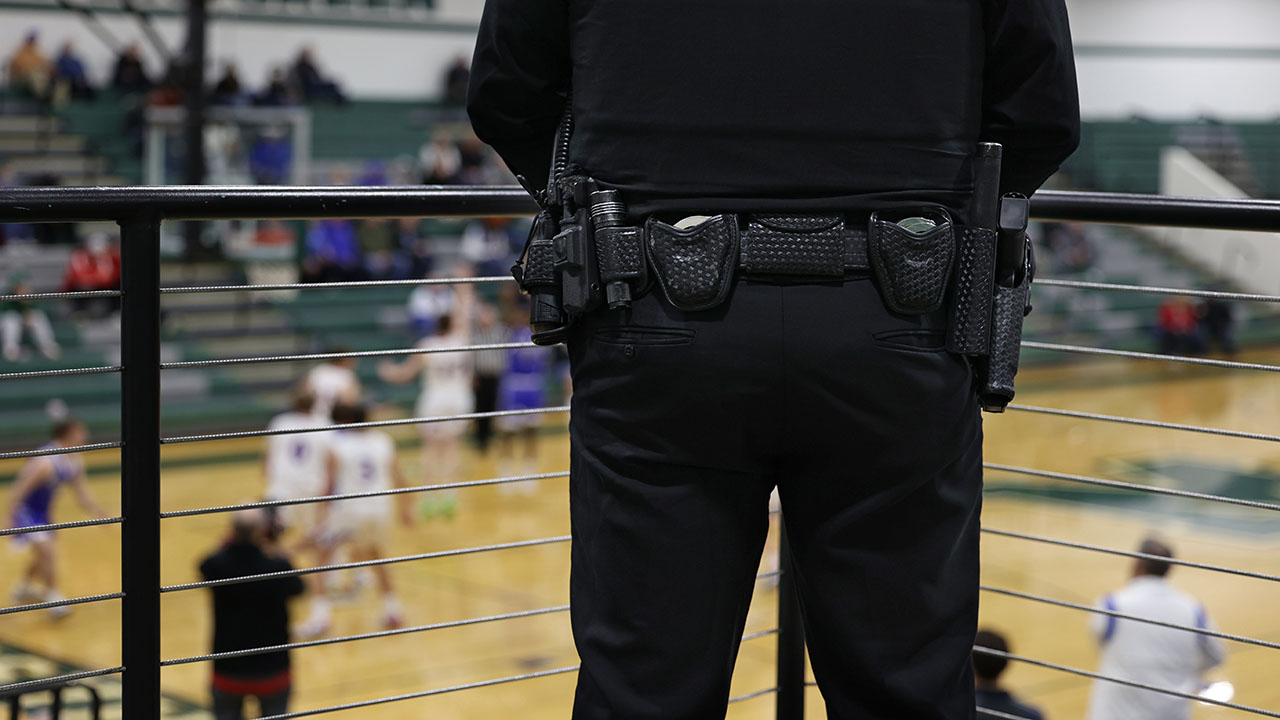
How One State Is Updating Its Guidance to Support Transgender Students
The New York state education department released guidance this week on how schools across the state should support and affirm transgender and gender-expansive students.
These guidelines—which include respecting students’ pronouns, allowing them access to bathrooms and athletics, and offering more gender neutral activities—come at a time when at least 22 states have passed laws that aim to restrict transgender and nonbinary students’ rights at school.
“In the face of the climate, we wanted to affirm what the state education department’s position was regarding all of our students being provided a safe and welcoming school environment,” said Kathleen DeCataldo, assistant commissioner of the state education department’s student support services office.
“And really be as clear … as possible that those rights are extended to our transgender and gender-expansive students.”
The department released the recommendations as an update to a previous version published in 2015. Part of the new document includes information on New York state laws passed since then that require schools to support all students, particularly LGBTQ+ students. For example, the report highlights the state’s GENDA Act, which was amended in 2019 to prohibit discrimination based on gender identity and expression.
The document also includes findings from mental health surveys about LGBTQ+ students, such as GLSEN’s Youth Mental Health Survey from 2021, which highlights the mental health consequences of bullying and unwelcoming environments on transgender and nonbinary youth.
The department interviewed 21 transgender students from six counties, whose experiences are documented anonymously. Their identities were kept private to protect them and their families from threats, according to the state’s department of education.
“I think the most important thing that we’ve been trying to stress is that this is all student centered,” Cataldo said.
While some high schools and some teachers provided an accepting environment, some students’ comments indicated unwelcoming attitudes toward transgender students in New York schools.
One student said teachers could be more supportive in shutting down negative comments or transphobia by other students. Another said they have been misgendered or referred to by names or pronouns they used before transitioning by school administrators. Finally, a student described being told by a school counselor that they were not ready to transition, and not being able to use the bathroom of their choice as a result.
The new guidance is the result of collaborations with about 30 stakeholders and advocacy organizations, including the New York Civil Liberties Union and the Trevor Project, an LGBTQ+ advocacy organization.
Nicole Neily, the founder of the conservative parents’ rights group Parents Defending Education, said the New York state education department should focus on providing students with a high-quality basic education, before expanding its purview into issues of gender identity.
“It is immoral … for a taxpayer-funded system that requires parental notification for field trips or aspirin to exclude parents from knowing vital information about their children’s lives,” Neily said.
“The default setting in schools has shifted from working alongside parents in the best interest of students to an adversarial one which assumes families are the enemies.”
Over the last three years, parents in at least six states have sued school districts over policies the districts say support transgender, gender nonconforming, and nonbinary students.
The parents who have filed the lawsuits claim that their 14th Amendment rights to direct the upbringing of their children are violated when schools do not inform them of their children’s pronouns or names, or aid in their social transition at school in any other way.
Here are some of the new guidelines from the New York state education department:
Eliminate gendered activities
The state’s department of education suggests getting rid of gendered language and activities, including referring to students as “boys and girls,” or “ladies and gentlemen,” and instead using gender neutral words such as “friends, learners, scholars, pals, folks, humans, people, everyone.”
It asks districts to avoid colors, images, or symbols that have been traditionally associated with one gender to divide or otherwise categorize students by gender.
The document also suggests removing gendered graduation gowns, and replacing Prom King and Prom Queen designations with “Royal Court.”
Finally, the guidelines suggest consulting with a district’s Title IX coordinator, diversity, equity, and inclusion staff or committee, as well as school attorneys to review their policies and to avoid gendered practices and events that do not serve a clear pedagogical purpose.
Allow students to socially transition at school
All students should be allowed to socially transition at school, and staff should respect students’ names, pronouns, and gender expressions, the document says.
“School personnel’s acceptance of a student’s asserted gender identity should require no more than a statement from the student expressing their preference,” the document says. “Schools do not need to require permission, letters from professionals, or other proof of gender identity.”
If a student wants to keep their name and pronouns confidential from their parents, school staff should assure them that they will maintain their privacy, according to the document.
If a transgender student requests a change to educational records to reflect their stated gender identity, the school should honor that request even if the student hasn’t sought parental permission or completed a legal name change, the guidelines say. However, schools should also let students know clearly that their parents may become aware of the use of an affirmed name through school communication or if their parent seeks to review the student’s education records.
Allow students the use of restrooms
Denying transgender and nonbinary students access to school facilities of their choice—including restrooms and changing rooms—is a violation of the state’s Dignity For All Students Act, which aims to provide students with a supportive environment free from discrimination, intimidation, harassment, and bullying at school.
Schools should make arrangements for transgender, nonbinary, and gender-expansive students that don’t promote stigma and protect student privacy, according to the guidance document.
The document cites Title IX, wherein discrimination based on a person’s gender identity or transgender status constitutes discrimination based on sex—and hence, prohibiting a student from accessing the restrooms that match their gender identity is prohibited.
The most common solution offered to transgender students is a single stall “all gender” restroom or private changing space, the document says. However, these spaces should never be forced upon students or presented as the only option. A transgender or gender-expansive student should be free to use the bathroom of their choice, the guidelines say.
Dig Deeper With Our Longreads
Newsletter Sign up to get our best longform features, investigations, and thought-provoking essays, in your inbox every Sunday.
The MEN was founded by John Huber in the fall of 2020. It was founded to provide a platform for expert opinion and commentary on current issues that directly or indirectly affect education. All opinions are valued and accepted providing they are expressed in a professional manner. The Maryland Education Network consists of Blogs, Videos, and other interaction among the K-12 community.
Recent Video
Worc. Sheriff and SA recommend Schools Partner with SRDs to Trespass Any...
I this series of videos, I dive deeply into the recommendations that the Sheriff and State’s Attorney have put...





